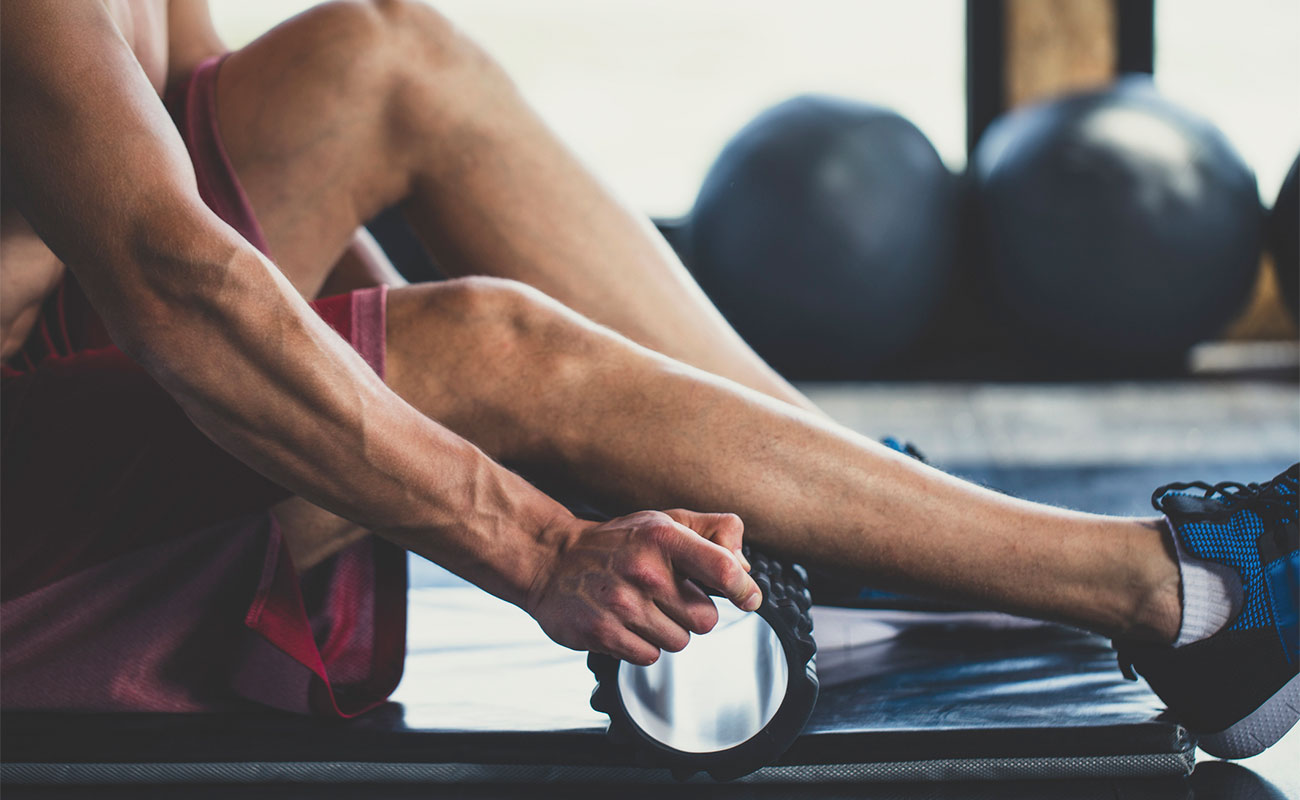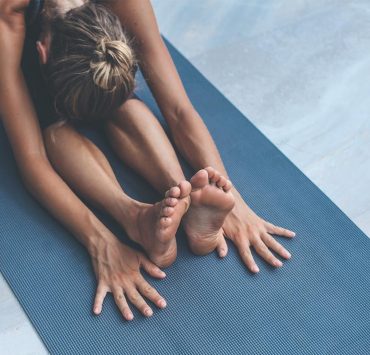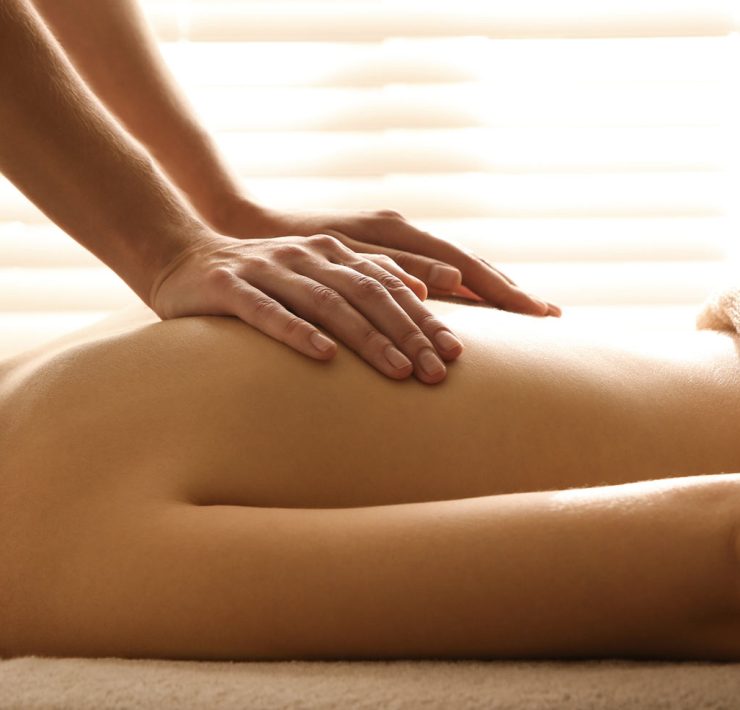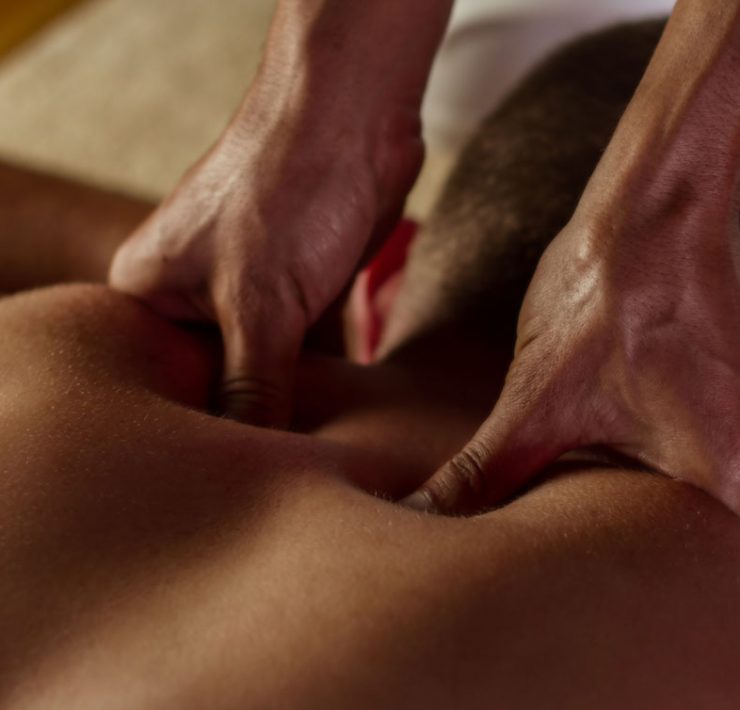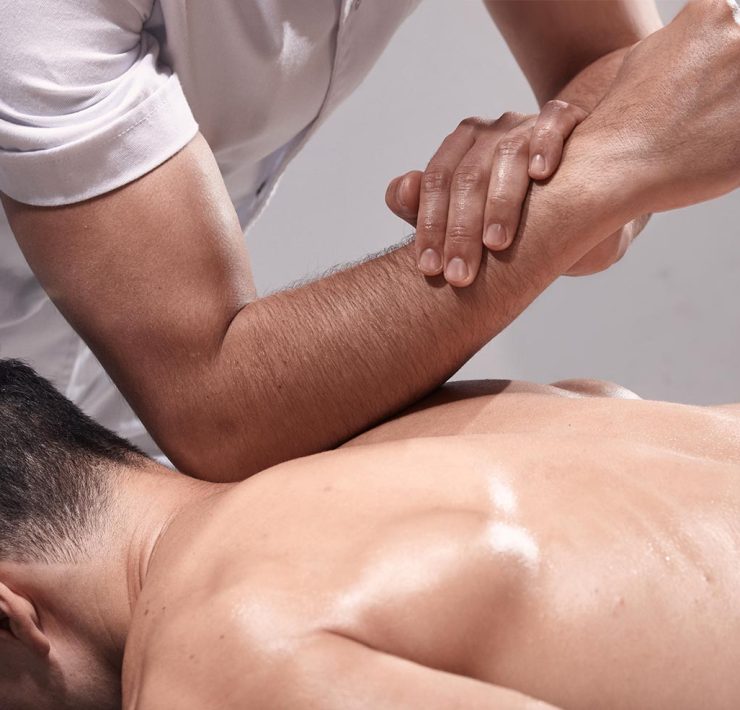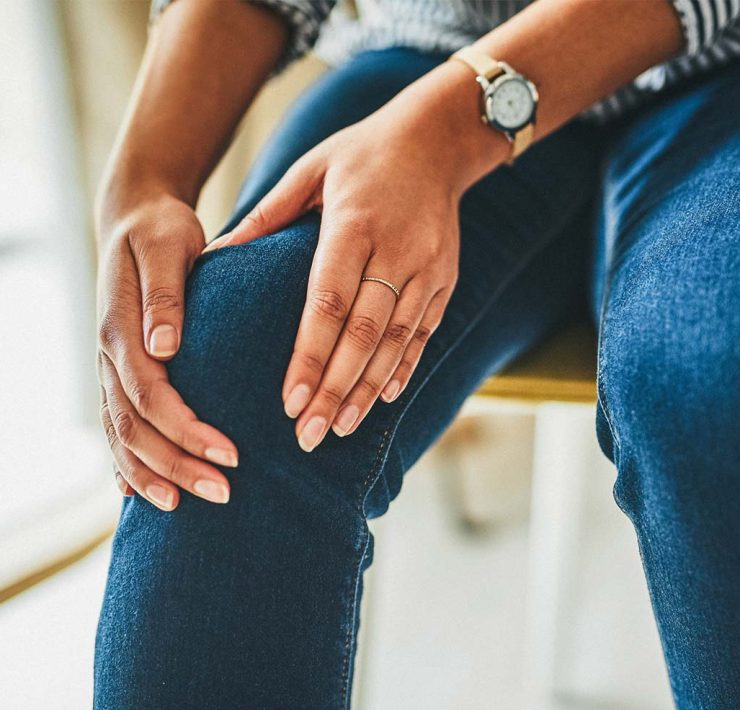Most people have experienced DOMS, or ”delayed onset muscle soreness,” to some degree, as it can affect anyone from the experienced athlete to the novice exerciser to someone who simply did some vigorous yard work. Basically, if you can put your muscles through hard work, you can suffer delayed onset soreness in them.
While much is still unknown about the exact causes of DOMS (which, when said aloud, rhymes with “proms”), what has been scientifically proven is that massage is an effective treatment for it. But before we discuss treating DOMS, let’s talk about what it is.
What is DOMS?
DOMS is not the pain that occurs during a workout. Rather, it is a dull, achy muscle pain that develops afterwards—usually within 24 hours of the workout, peaking 24–72 hours after. DOMS typically occurs after an especially strenuous workout, the introduction of a new workout routine, or a workout that emphasizes eccentric muscle contraction (controlled lengthening the muscle fibers), such as downhill running, lowering weights, and the downward motion of squats or push-ups.
Symptoms of DOMS include:
- Muscle aches starting 12-24 hours after a workout
- Pain peaks ~72 hours after a workout and then subsides
- Pain and stiffness when moving, especially after being sedentary
- Muscles may feel swollen and tender to the touch
- Muscular fatigue
What Causes DOMS?
The exact cause of DOMS has not been scientifically determined (though a common theory—that the pain is caused by lactic acid buildup in the muscles—has been debunked). Of the roughly five remaining theories on what causes DOMS, scientists suspect a combination of two or more of these to be at play:
- Muscle Spasm: Muscle activation leads to a compression of local blood vessels and ischemia (reduction in blood supply), resulting in muscle spasm
- Connective Tissue Damage: Muscle fibers have sheaths that surround them, and the strain on these fibers may cause pain or inflammatory response
- Muscle Damage: The workout causes physical microtrauma to the muscle tissue.
- Inflammation: The 12–24 hour delay of pain onset—a hallmark of DOMS—may indicate an additional inflammatory response, causing secondary damage after the initial insult.
- Enzyme Efflux: One postulated theory points to the accumulation of calcium in the muscle tissue during exercise, which activates enzymes that break down muscle tissue and then causes pain and an inflammatory response.
How is DOMS Treated?
Ultimately, the only way to treat DOMS is with patience and time—usually 2–4 days. Effective treatments for DOMS in scientific research are sparse and mixed, but supplemental strategies you can try while waiting DOMS out include:
- Massage: Manual tissue manipulation promotes circulation, helps restore range of motion, and many other benefits. If a professional massage is out of your budget, self massage using your hands, foam rollers, tennis balls, or recovery tech like the Hypervolt by Hyperice can provide relief, too.
- NSAIDS: If inflammation is indeed part of the DOMS process, anti-inflammatory medication would help calm it down.
- Topical analgesics: Products like Icy Hot and Tiger Balm work by distracting your nerves. Nerves are only capable of sending one signal to the brain at a time, so replacing a pain signal with a slightly-burning-but-pleasant sensation can keep your nerve pathways occupied and distracted from pain.
- Ice or a cold bath: Cool temperatures can slow the inflammation process.
- Warm bath or hot tub: Warmth increases circulation and relaxes the muscle tissue, which can help lessen the pain and stiffness associated with DOMS
- Active recovery: A low-intensity workout can help reduce muscle stiffness. Exercise also creates a temporary analgesic effect.
How Does Massage Help DOMS?
More and better studies are needed to better examine massage as a therapy for DOMS, but there is a growing body of evidence showing that massage can effectively reduce the pain and soreness associated with it. Many of the existing studies use “perceived soreness” as a metric against which to measure massage effectiveness, and although this is a difficult measure to quantify, the results are nonetheless a positive indicator for massage as a DOMS treatment.
The results of two recent meta-analyses show significant improvement in the pain associated with DOMS. A 2017 meta-analysis of 11 randomized controlled trials with a total of 504 participants demonstrated statistically significant decreases in muscle soreness rating. A 2020 meta-analysis of 29 studies with a total of 1,012 participants also found statistically significant improvements in flexibility and DOMS as a result of massage.
Massage feels great, relaxes the body and mind, and has minimal side effects. This makes it an excellent option for treating muscle pain, especially that associated with delayed onset muscle soreness. Conduct your own personal study on DOMS the next time you feel its characteristic muscle aches and stiffness by booking a massage at home with Zeel! With easy online or app-based booking as soon as the same day, it couldn’t be more convenient to discover how massage can relieve your pain—for science!
Melanie Peddle holds a MS in Mechanical Engineering and has been practicing massage since 2012. She is an instructor with Western Colorado University in its partnership with the University of Colorado, focusing on biomechanical engineering and injury, as well as applications in adaptive sports. An accomplished collegiate athlete, Melanie brings an engineer's mind to all her physiological pursuits, and a passion for the most interesting engineering challenge of all: the human body.

